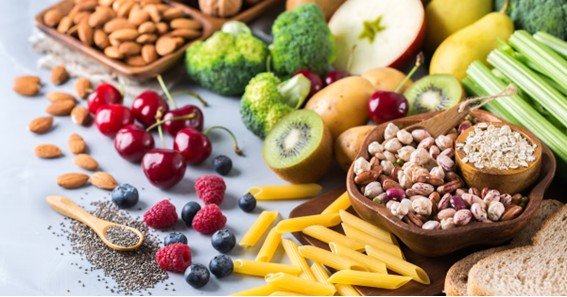Insoluble dietary fiber has long been overlooked in poultry nutrition, often considered merely as a filler with minimal benefits. However, recent studies have highlighted its significant positive impacts on poultry health and productivity. Understanding the importance of incorporating insoluble dietary fiber into poultry diets can lead to improved digestive health, better nutrient utilization, and enhanced overall performance.
Benefits of Insoluble Dietary Fiber in Poultry Diets
1. Enhanced Digestive Health
Insoluble fiber stimulates the development and function of the gizzard, a crucial organ in a bird’s digestive system. The presence of coarse fiber particles promotes muscular activity in the gizzard, leading to increased grinding of feed, which in turn improves nutrient digestibility. This mechanical action also regulates the passage rate of digesta, ensuring optimal nutrient absorption in the intestines.
2. Improved Nutrient Utilization
Incorporating moderate levels of insoluble fiber into poultry diets has been shown to enhance the digestibility of nutrients such as starch and proteins. By accelerating the transit of digesta through the gastrointestinal tract, insoluble fiber reduces the accumulation of harmful substances and fosters a favorable environment for beneficial gut microbiota. This balance is essential for efficient nutrient uptake and overall bird health.
3. Prevention of Behavioral Issues
Diets rich in insoluble fiber have been linked to a reduction in undesirable behaviors like cannibalism among poultry. The increased satiety and improved gut health associated with higher fiber intake contribute to calmer behavior and lower mortality rates in flocks.
4. Better Litter Quality
The inclusion of insoluble fiber in poultry feed has a positive effect on litter quality by reducing moisture content. Drier litter conditions decrease the incidence of footpad dermatitis and other hygiene-related issues, promoting healthier living environments for the birds.
Sources of Insoluble Dietary Fiber
Common sources of insoluble fiber in poultry diets include wheat bran, oat hulls, soybean hulls, sunflower hulls, and wood shavings. These materials are rich in cellulose, hemicellulose, and lignin, which contribute to the structural integrity of plant cell walls and provide the necessary fiber content for poultry.
Conclusion
Incorporating insoluble dietary fiber into poultry diets is essential for promoting digestive health, enhancing nutrient utilization, preventing behavioral issues, and improving litter quality. By understanding and leveraging the benefits of insoluble fiber, poultry producers can achieve better health outcomes and productivity in their flocks.
FAQ
1. What is insoluble dietary fiber, and why is it important in poultry diets?
Insoluble dietary fiber consists of plant-based components like cellulose and lignin that are not digestible by poultry. It plays a crucial role in stimulating gizzard activity, improving nutrient digestion, and maintaining overall gut health.
2. How does insoluble fiber improve nutrient absorption in poultry?
By enhancing gizzard function and regulating digesta passage rate, insoluble fiber ensures that nutrients are adequately broken down and absorbed in the intestines, leading to better growth and performance.
3. Can insoluble fiber help prevent behavioral problems in poultry?
Yes, diets enriched with insoluble fiber have been associated with reduced incidences of cannibalism and other aggressive behaviors, likely due to increased satiety and improved gut health.
4. What are some common sources of insoluble dietary fiber for poultry?
Common sources include wheat bran, oat hulls, soybean hulls, sunflower hulls, and wood shavings, all of which are rich in components that provide beneficial fiber content.
5. How does insoluble fiber affect litter quality in poultry housing?
Insoluble fiber helps reduce the moisture content of poultry litter, leading to drier conditions that minimize the risk of footpad dermatitis and other hygiene-related issues.










